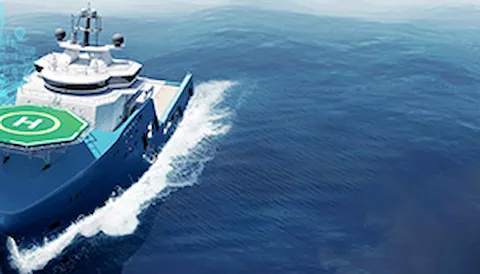Dynamic station-keeping capability analysis
We help determine when your vessel can perform its tasks safely and efficiently while maintaining its position and heading.
In offshore operations involving dynamic positioning, tasks must be performed in a safe, efficient manner. Determining the operational window for a vessel or designing a vessel for certain weather can be challenging.
Using time-domain simulations, our experts obtain more insight into the vessel’s station-keeping performance compared to traditional quasi-static analyses. Together with our in-house developed software, DynCap, our approach allows the evaluation of vessel footprints, statistics of vessel motion, thruster and power utilization, gangway operability, and fuel consumption under realistic dynamic conditions.
From design to operation – we assist you in relevant DP asessments
In design processes, we can assist in the selection of the optimal thruster or power layout, comparing performance from different vessels. Or we can help you in the planning of operation such as vessel selection processes, finding optimal positioning strategies and determining the operational window and operability.
Our experts can provide documentation required for DP capability levels 1, 2 and 3 in line with DNV-ST-0111 or other standards. For a particular vessel in operation, the simulation tool can function as a decision-supporting tool for contingency and maintenance planning by simulating equipment out for maintenance or loss of equipment due to failures.
The DynCap software is available for customers up to DP capability level 2. Visit the Veracity marketplace for more information and pricing.
Regular analysis of a vessels dynamic positioning capabilities are recommended, especially if the system or parts of the system are replaced or updated.
Your benefits with DNV for dynamic positioning station-keeping analyses:
- Find the optimal vessel design configurations
- Ensure the vessel is fit for purpose
- Tailor the positioning limits and other acceptance criteria (footprint, sea-keeping, dynamic power load, crane tip accelerations, stroke of gangways, transient motion after failure)
- Effective operational risk management
- Independent third-party evaluation or verification of operational window



